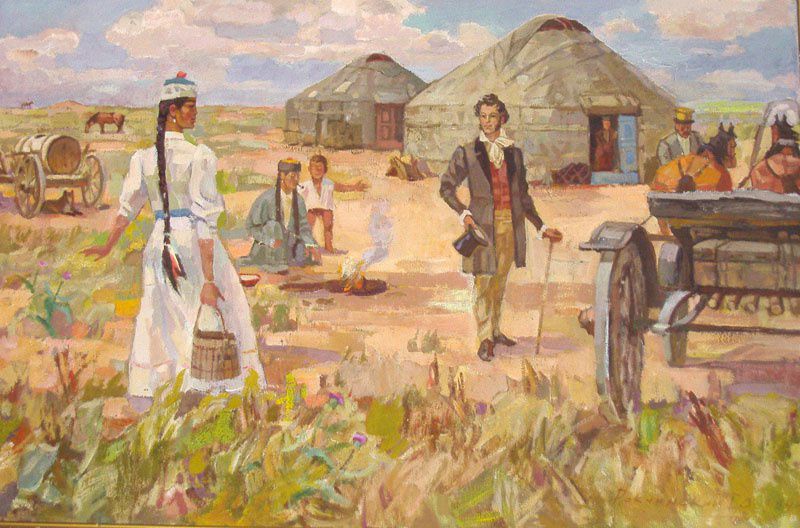Earlier, Uzbekistan President Shavkat Mirziyoyev, in accordance with the resolution "On additional measures on development of chess in Uzbekistan" entrusted the Ministry of Public Education and Chess Federation to approve educational progamme on training chess in schools.
In this regard, the President of the International Chess Federation (FIDE) Kirsan Ilyumzhinov said that interest in chess in Uzbekistan is not accidental. "In order to fully understand this, it is necessary to recall the history of chess in Uzbekistan," he said.
Until 1990, it was believed that India is the birthplace of chess. A sensational discovery that changed the notion of the history of chess was made by Yury Buryakov, a professor at the National University of Uzbekistan. In 1990, during the excavation of the ruins of the ancient city Afrasiab, not far from Samarkand, he found a unique set of seven delicately carved ivory miniature chess pieces. It compiled the world's most complete collection of that nature: the shah (king), chariot, warrior on horseback, elephant rider, rider with the lion mask on his face and infantrymen. More than six years later, in 1996, Japanese archaeologists, during the excavations of the ancient city of the Dalverzin-Tepa, located in the southern part of Uzbekistan, found two unique chess pieces – an elephant and a zebu bull – which made it possible to establish that proto-chess was played in Uzbekistan as far as in the beginning of 2nd century AD. These figures date back to the time of the Kushan Empire, which included the territories of present Uzbekistan, Tajikistan, Afghanistan, Pakistan and India.
This historic discovery, according to Ilyumzhinov, will force historians and archaeologists to reconsider the classical view of the time and place of origin of the ancient game.
In addition, FIDE head believes, another fact confirming the origin of chess in Uzbekistan is the meaning of the word "shakhmaty" (Chess in Slavic languages, Ed.). It is known that there were no shahs and padishahs in India from the 2nd to the beginning of the 16th century in India. They appeared during the reign of the Boburids dynasty. Prior to this, India was ruled by rajas.
Therefore, one cannot assume that "shakhmaty" can be of Indian origin. The second part of this word - "mat" is used in modern Uzbek language as a "desperate situation" or "dead end" where the "shah" is being driven to. Hence the origin of the word from the Uzbek word "shohmot", i.e. "Shah driven to a dead end". It should be noted that everyone played chess at the time, from a high-ranking nobleman to artisan. In Uzbekistan, chess pieces are often found during excavations under the ruins of houses, in the courtyards of artisans and even in baths. The great Amir Timur, as we already mentioned, was also an outstanding chess player and introduced his improvements to the game. One day, he, being carried away by the attack of an opponent, heard about the birth of his son. Timur, without raising his head from the board, said: "I give him the name Shokhruh!" (Royal rook).
Chess in the East was not accidentally called "a game of palaces and teahouses." Archaeologists still find pieces made not only of ivory but also of the simplest materials: bones of domestic animals, ceramics, glass and metal.
12.09.2018
Ilyumzhinov: "Chess are taught in Uzbekistan schools. It's good news for the chess world"

As we reported earlier, UCF President Dmitry Li, met with FIDE President Kirsan Ilyumzhinov in Tashkent on August 15, 2018. During the talks, Kirsan Ilyumzhinov expressed special gratitude to the President of the Republic of Uzbekistan Shavkat Mirziyoyev for the recent Decree on introducing chess as an obligatory subject in 150 schools for further popularization of chess as a sport that develops brainpower and intellect.
Currently, it is a pilot project, but in the future this subject will be studied in all schools of the country.





















